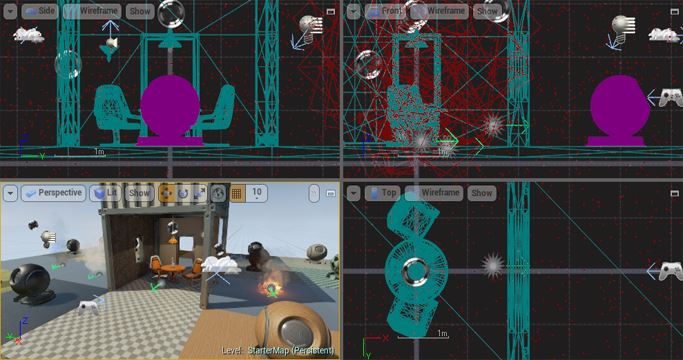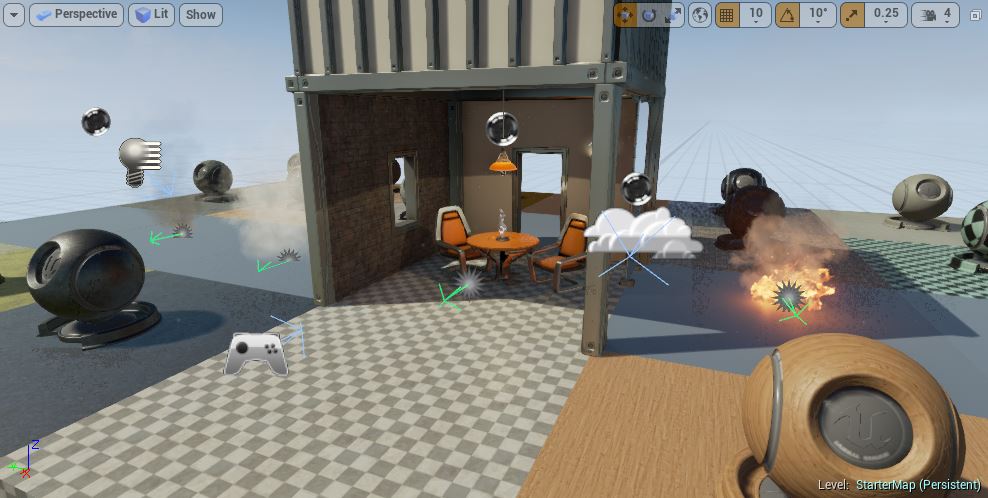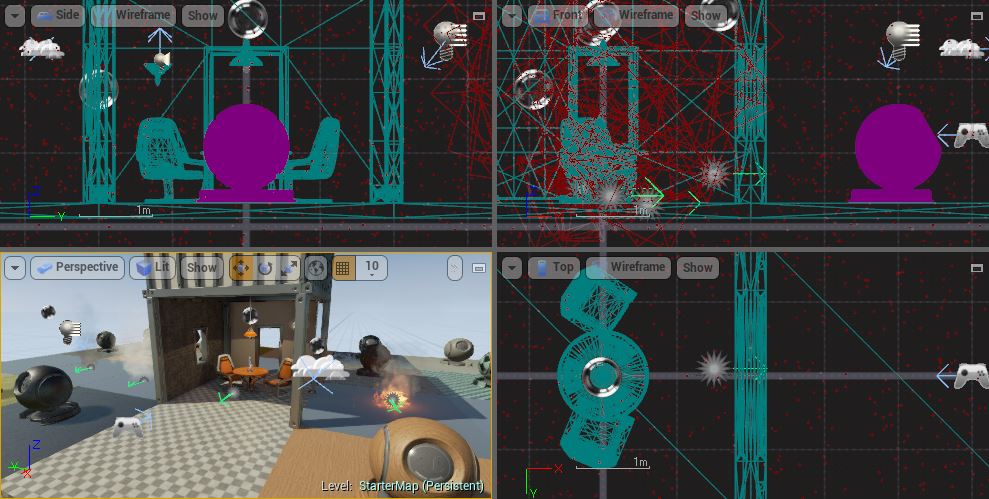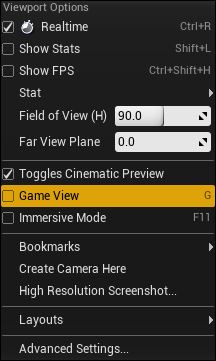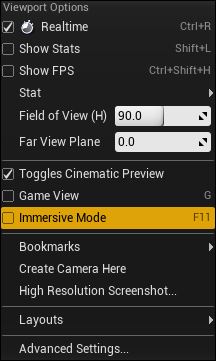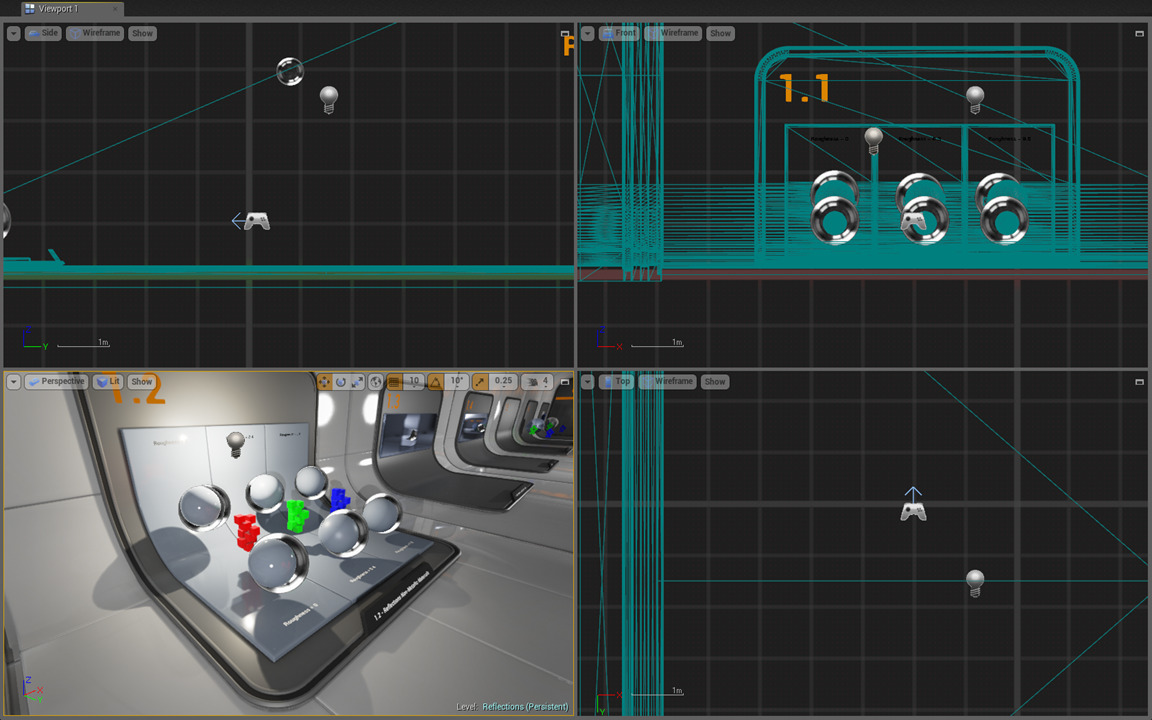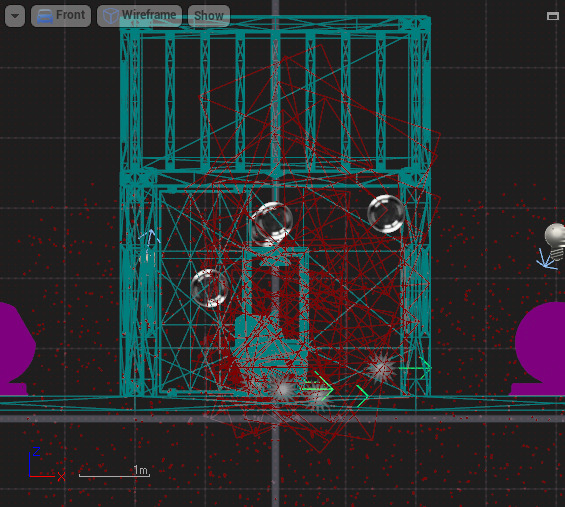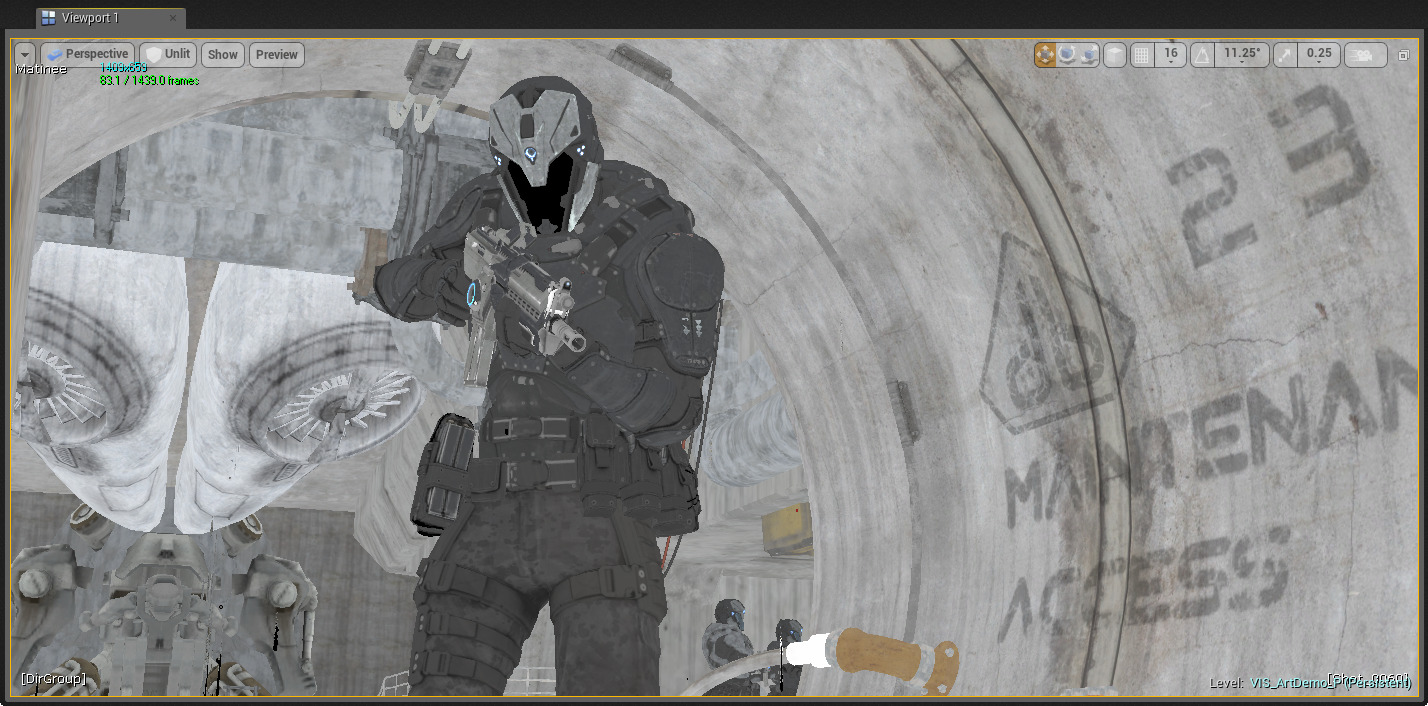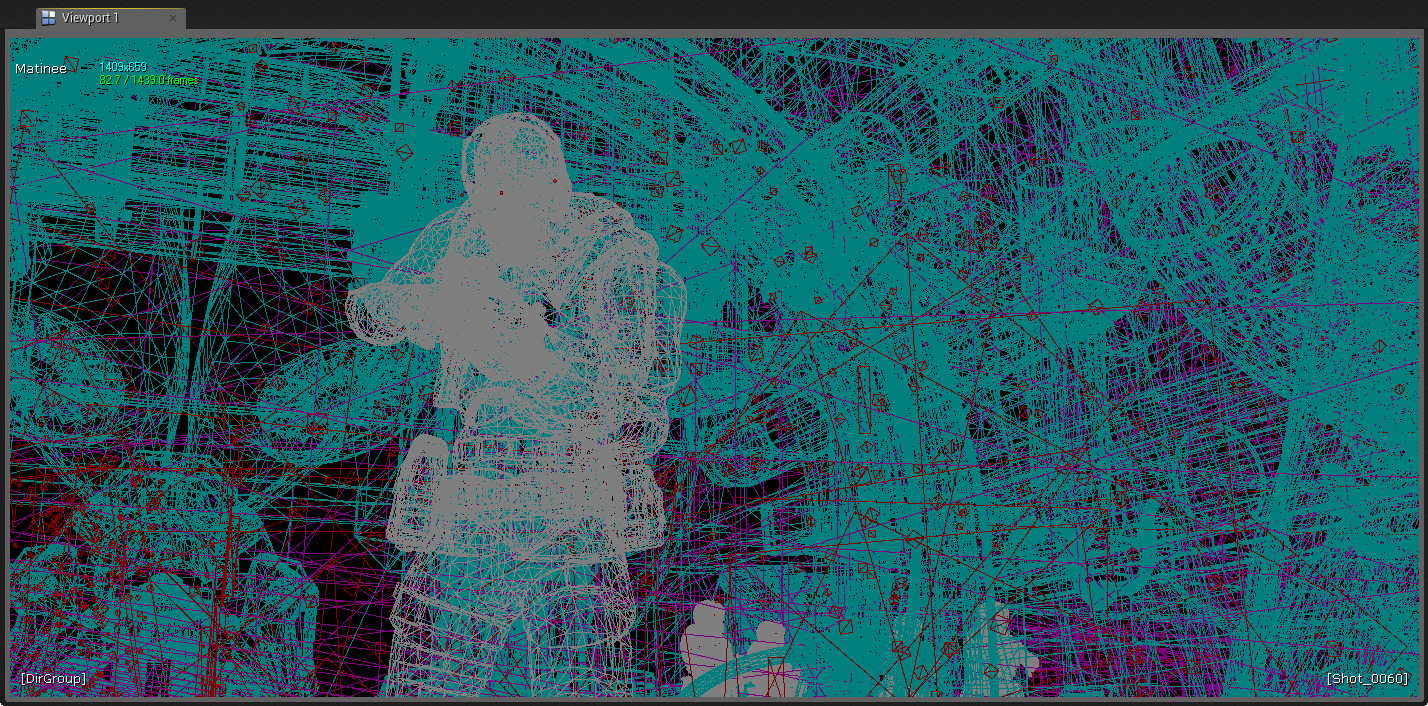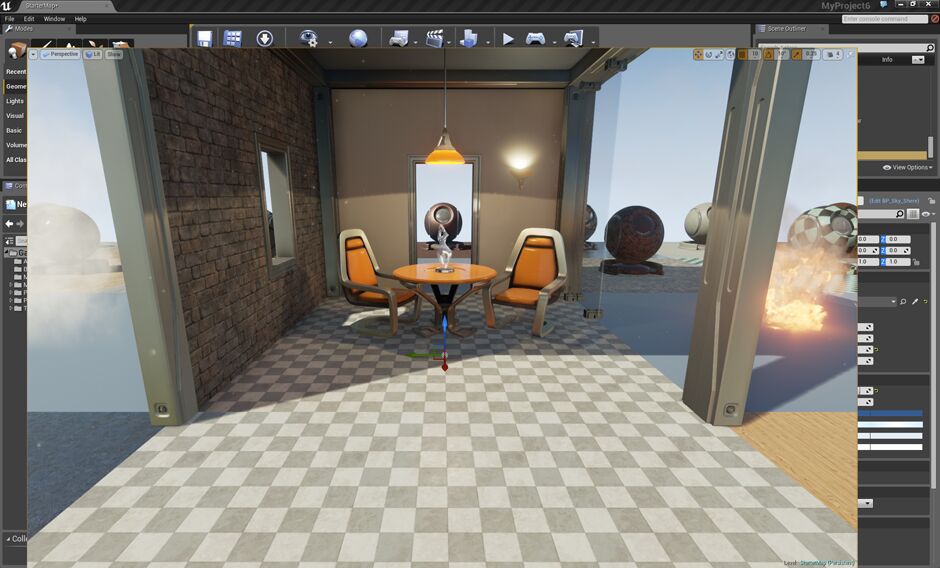что такое viewport в unreal engine
UEngine.Ru
Русскоязычное сообщество Unreal Engine 4
Основы вьюпортов
Вьюпорты используются для создания уровней. Навигация и просмотр во вьюпортах может происходить так же, как будет и в самой игре, а может быть более схематично, для более точных операций над объектами. Помимо режимов, Вьюпорты имеют множество различных инструментов, которые помогут посмотреть именно ту информацию о сцене, которая вам нужна. Так же имеются инструменты для манипулирования объектами.
Типы вьюпортов
В анриале, как и в многих программах 3х мерного моделирования, существует два вида Вьюпортов: Перспективный и Ортографический виды. Перспективное окно, это где вы можете наблюдать и редактировать вашу сцену в 3х мерном виде. Ортографические виды — Это 2-х мерные окно трех типов: Сверху(Top), Сбоку(Side) и Спереди(Front).
Вы можете быстро переключаться между видами с помощью клавиш Alt + G, H, J, K для Перспективы, спереди, сверху и сбоку соответственно.
Расположение вьюпортов
Стандартно вы видете только окно перспективы, когда открываете редактор Unreal Engine 4.
Вьюпорт можно развернуть на 4 окна другого типа(Ортографические + перспектива). Изначально, все эти окна расположены с 4х сторон, по схеме 2х2.
Вьюпорты можно скрывать и раскрывать с помощью кнопок, которые расположены в верхнем правом углу каждого окна.
Режимы отображения
В Unreal Engine 4 имеется достаточно обширное количество видов визуализации, которое позволяет получить нужную информацию, некоторая из которых потом соединятся во едино и выводит финальный результат, который будет использован в окончательном варианте вашей сцены. Это позволяет увидеть какие либо недочеты вашей сцены или более точно настроить какие либо вещи в вашем проекте. Самые основые имеют горячие клавиши, однако ко всем можно получить доступ через меню отображения.
Самые основные виды отображены ниже. Для просмотра полного списка типов отображения —
Игровой режим
Игровой режим отображает вид во вьюпорте таким, какой он будет представлен в финальной сцене. Это значит, что он убирает все служебные элементы, такие как иконки объектов(Свет, кубмапы и т.п.).

Горячая клавиша для активации режима — G. Так же вы можете активировать игровой режим через меню Опций Вьюпорта.
Полноэкранный режим
Помимо развернутых и скрытых режимов Вьюпортов, существует ещё и полноэкранный режим, который растягивает окно на весь размер редактора. Что бы полностью насладиться полноэкранном режимом, раскройте редактор на весь экран.
Активируется режим нажатием кнопки F11 при выбранном вьюпорте, а так же через меню Опции вьюпорта.
Что бы вернуться в нормальный режим, можете использовать один из способов, описанных выше, или же нажать на кнопку, которая расположена сверху справа, при полноэкранном виде.
Viewport Basics
Basic concepts and features of the Viewports in Unreal Editor.
The Viewports are your window into the worlds you create in Unreal. They can be navigated just as you would in a game, or can be used in a more schematic design sense as you would for an architectural Blueprint. The Unreal Editor viewports contain a variety of tools and visualizers to help you see exactly the data you need.
Viewport Types
You can cycle through the types of Viewports by pressing Alt and G, H, J, or K. These set the Viewport to be Perspective, Front, Side, or Top, respectively.
Viewport Layout
By default, you see a single Perspective Viewport when you open Unreal Editor.
The Viewport panel actually contains multiple Viewports, which are laid out in a grid and any of which can be shown
The Viewports can be minimized and maximized using the
buttons located in the top right corner of each Viewport.
View Modes
The Unreal Editor viewports have a large number of visualization modes to help you see the type of data being processed in your scene, as well as to diagnose any errors or unexpected results. The more common view modes have their own hotkeys, but all can be accessed from the viewport within the View Mode menu.
The most commonly used view modes are shown here:
See View Modes for a listing and description of all available modes.
Game View
Drag the slider to toggle Game View.
To enable Game View, simply press the G key (by default) with the Viewport focused or choose the Game View option from the Viewport Options menu :
Immersive Mode
Viewports have another state in addition to maximized and minimized that they can be in called Immersive Mode. This refers to Viewport being maximized out to the full extents of the window containing the Viewport panel. When you have the Level editor maximized, this enables you to have your Viewport run in full-screen for a truly immersive editing experience!
To enable Immersive Mode, simply press the F11 key (by default) with the Viewport focused or choose the Immersive Mode option from the Viewport Options menu :
You can restore the Viewport to normal using the same procedure above or by pressing the
button located at the top right of the Viewport when in Immersive Mode.
Drag the slider to see Immersive Mode in action!
Drag the slider to see Immersive Mode in action!
Viewport Basics
Basic concepts and features of the Viewports in Unreal Editor.
The Viewports are your window into the worlds you create in Unreal. They can be navigated just as you would in a game, or can be used in a more schematic design sense as you would for an architectural Blueprint. The Unreal Editor viewports contain a variety of tools and visualizers to help you see exactly the data you need.
Viewport Types
You can cycle through the types of Viewports by pressing Alt and G, H, J, or K. These set the Viewport to be Perspective, Front, Side, or Top, respectively.
Viewport Layout
By default, you see a single Perspective Viewport when you open Unreal Editor.
The Viewport panel actually contains multiple Viewports, which are laid out in a grid and any of which can be shown
The Viewports can be minimized and maximized using the
buttons located in the top right corner of each Viewport.
View Modes
The Unreal Editor viewports have a large number of visualization modes to help you see the type of data being processed in your scene, as well as to diagnose any errors or unexpected results. The more common view modes have their own hotkeys, but all can be accessed from the viewport within the View Mode menu.
The most commonly used view modes are shown here:
See View Modes for a listing and description of all available modes.
Game View
Drag the slider to toggle Game View.
To enable Game View, simply press the G key (by default) with the Viewport focused or choose the Game View option from the Viewport Options menu :
Immersive Mode
Viewports have another state in addition to maximized and minimized that they can be in called Immersive Mode. This refers to Viewport being maximized out to the full extents of the window containing the Viewport panel. When you have the Level editor maximized, this enables you to have your Viewport run in full-screen for a truly immersive editing experience!
To enable Immersive Mode, simply press the F11 key (by default) with the Viewport focused or choose the Immersive Mode option from the Viewport Options menu :
You can restore the Viewport to normal using the same procedure above or by pressing the
button located at the top right of the Viewport when in Immersive Mode.
Drag the slider to see Immersive Mode in action!
Drag the slider to see Immersive Mode in action!
Viewport Options
Explanations of the various options available within the editor viewports.
Overview
The Viewport Options menu is accessed by clicking the
button located in the upper-left corner of the viewport and provides basic rendering settings for the viewport.
Options Reference
Viewport Options
Realtime
Toggles realtime rendering of the viewport.
Show Stats
Toggles the ability to display statistics in the viewport. Enabling this also enables Realtime.
Show FPS
Toggles the display of frames per second (FPX) information in the viewport. Enabling this also enables Realtime.
Field of View
Allows you to change the FOV of the viewport camera. This effectively zooms the lens of the camera in and out.
Far View Plane
Allows you to choose the distance to use as your far view plane. Setting this to zero acts as an infinite far view plane.
Toggles Cinematic Preview
Toggles the ability to preview Matinee cinematics in the viewport.
Game View
Toggles Game View which displays the scene as it appears in-game, i.e. Actor icons are not rendered, etc.
Immersive Mode
Toggles Immersive mode for the viewport. When in Immersive mode, the viewport occupies the entire area of the Unreal Editor window.
Bookmarks
Provides the ability to set camera locations and rotations as bookmarks, and provides access to jump to existing bookmarks. To create a bookmark, press Ctrl + any of the numbers 1-0 along the top of your keyboard. To recall a bookmark, simply press the number you chose for that bookmark.
Create Camera Here
Creates a Camera Actor at the current location and rotation of the viewport.
High Resolution Screenshot.
Layouts
Allows you to choose between a variety of different layouts for your viewport.
Advanced Settings.
Opens the Editor Preferences window to the Viewports section to access more advanced Viewport settings.
Blueprint Editor Viewport
Overview of the viewport in the Components mode of Blueprint Classes
In the Viewport, in the Blueprint Editor, you can view and manipulate your Blueprint’s components.
You can also manipulate a selected component by adjusting its values manually in the Details panel.
Selecting a component in the Component list selects that component in the Viewport too, and populates the Details panel with its property information.
The View Menu
The View drop-down menu, in the Viewport‘s upper-left corner, has somewhat different options than the Level Editor’s Viewport menus.
Reset Camera
Refocuses the camera on the components.
Realtime
Toggles realtime rendering of the viewport.
Show Floor
Toggles whether a floor is displayed to assist with the placement of components.
Show Grid
Toggles viewport grid.
For more information about the Level Editor Viewport, see the Main Editor Viewports documentation.

